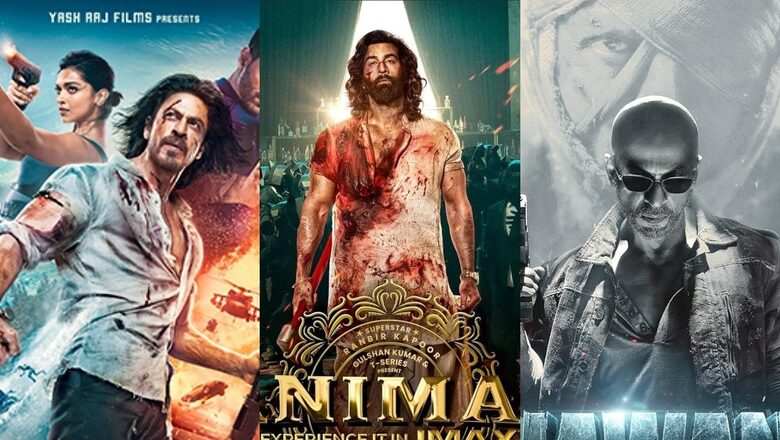
views
The year 2024 began on an eventful note for the Indian film industry. A clash between two big-screen offerings of different genres had started a few days before Christmas last year. Released on December 21, Rajkumar Hirani’s social drama Dunki, which brought Shah Rukh Khan and Hirani together for the first time ever, was expected to prove whether or not a non-action film with Bollywood’s biggest megastar could be as successful as Jawan and Pathaan, his last two all-time blockbusters. Prashanth Neel’s Telugu language epic action film Salaar: Part 1 – Ceasefire starring Rebel Star Prabhas was being viewed as Dunki’s rival with the potential to eclipse the SRK-starrer in the market for Hindi films. At the start of the year, fans of both SRK and Prabhas were keeping a close watch on the box-office numbers of both these films.
Less than one month later, on January 20, Salaar’s versions in the original Telugu language and its dubbed versions in Tamil, Malayalam and Kannada began streaming on Netflix. The film’s English dubbed version dropped on Netflix on February 5, followed by its Hindi dubbed version on Disney+ Hotstar on February 16. Dunki’s only version in Hindi premiered on Netflix on February 15, or less than two months after its theatrical release. Within a short time, subscribers of the two streaming platforms could watch these films in their homes. Considering producers sell the OTT rights of their theatrical releases, this was a simple case of history repeating itself.
Although Bollywood has recovered after a long-lasting dismal phase at the box office, is it correct to assume that modern-day theatrical releases are taking a hit at the box office because of the awareness of their inevitable release on streaming platforms later? Most films are, although to what extent that happens cannot be determined.
Three recent actioners gave rise to unmistakable joy among filmgoers: Siddharth Anand’s Pathaan, Atlee’s Jawan and Sandeep Reddy Vanga’s Animal. The enthusiasm of the average viewer was evident, partly because of countless social media posts celebrating their release. After these films hit the marquee, video clips of song, dance and noise during their screening were shared on social media accounts. Industry observers were not surprised when these three films registered phenomenal scores at the box office. After their OTT release, therefore, it is safe to say that most viewers who have watched them on tiny screens have not done it for the first time.
Salaar, on the other hand, did not get the kind of record-breaking numbers Prabhas fans had hoped it would. The Hindi version did not do badly for sure, but its inability to better than that implies many viewers of Hindi films are going the online way and streaming it on Disney+ Hotstar without having enjoyed the big-screen experience earlier. Similarly, Dunki, a lesser success than Jawan and Pathaan, will attract a significant number of first-time viewers on Netflix. Had these films not been released on streaming platforms, some among these viewers would have watched them in the theatres. That they chose to wait for the OTT release shows, once again, that filmgoers cannot be persuaded to pay for movie tickets that easily.
When Covid-19 pandemic had brought our lives to a standstill, the society struggled to cope with a deep sense of uncertainty and fear. Many Bollywood films originally made for theatrical viewing opted for the direct-to-digital route. Among these OTT releases were Raghava Lawrence’s horror comedy Laxmii (it was not released theatrically in India, although it did have an overseas release), Anu Menon’s biographical drama Shakuntala Devi, Shoojit Sircar’s comedy drama Gulabo Sitabo and Mukesh Chhabra’s coming-of-age film Dil Bechara. Viewership of OTT content multiplied during the pandemic, which ultimately redefined the business of entertainment itself.
OTT platforms cannot match the joy derived from watching a film in a theatre. However, it offers convenience without costing much, which makes it an ideal option for many viewers. Small-budget non-star theatrical releases suffer more because the temptation of watching them before their OTT release is not strong enough. Direct-to-digital releases are in plenty, too, such as Pulkit’s crime thriller Bhakshak, which premiered on Netflix recently.
Bhakshak is a typical instance of a modern-day film that aspires for good viewership on a streaming platform. It revolves around the serious subject of abuse of girls, does not have big stars, and does not offer the kind of larger-than-life entertainment big-budget, star-studded films do. Its release on Netflix is the latest reminder that direct-to-digital releases will be made in significant numbers in an era when the chances of a small-budget theatrical release’s commercial success has diminished considerably.
Ever since Pathaan revived optimism in the industry with its box-office performance last year, Bollywood has delivered a few blockbusters and several smaller but significant commercial successes. However, the industry is deeply aware that streaming platforms hijack a share of their potential urban theatrical viewership in the case of most films. As said earlier, to what extent that happens cannot be determined. But, there is little doubt that the industry is getting used to this modern-day reality – while selling OTT rights for ‘undisclosed’ sums of money and expecting more eyeballs for films in people’s homes.
(The writer, a journalist for three decades, writes on literature and pop culture. Views expressed in the above piece are personal and solely that of the author. They do not necessarily reflect News18’s views)


















Comments
0 comment